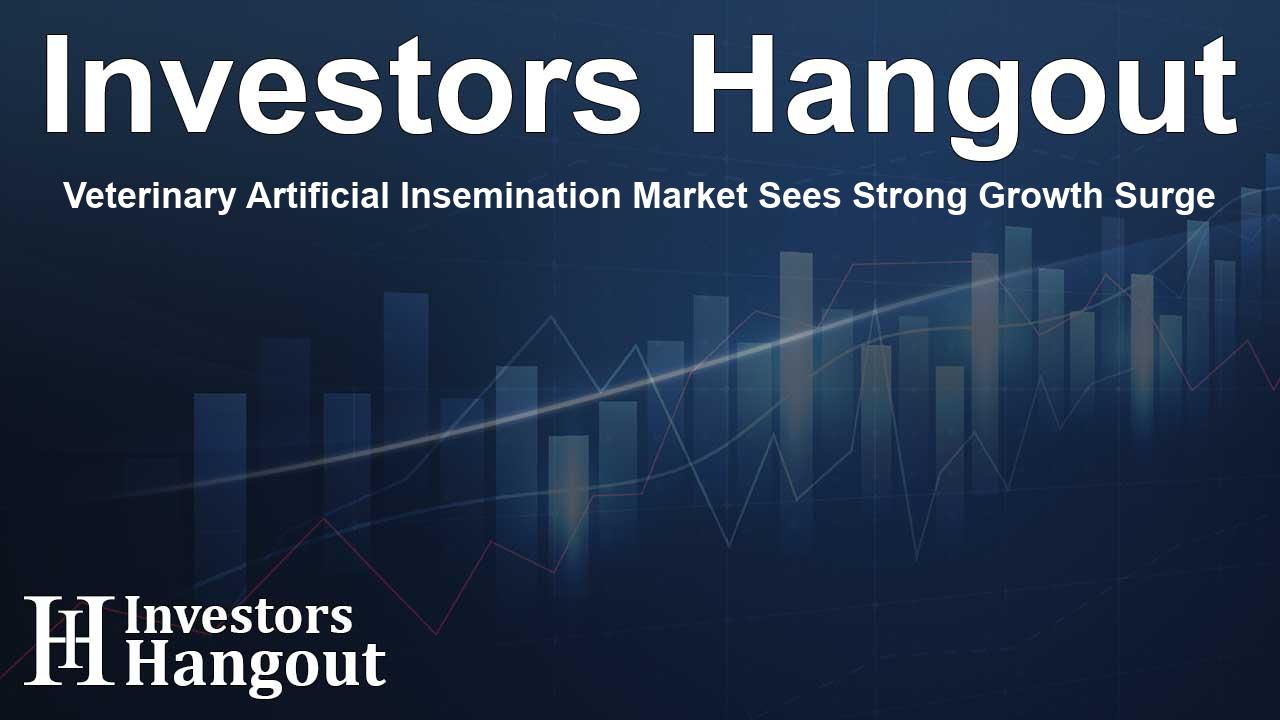Veterinary Artificial Insemination Market Sees Strong Growth Surge

Veterinary Artificial Insemination Market Outlook
The global veterinary artificial insemination market is witnessing notable growth, projected to expand by USD 962.3 million between 2024 and 2028. This increase is largely driven by the enhancement of livestock productivity and the impact of AI on market trends. Through advanced technologies, governments and private enterprises are collaborating to spur innovations aimed at improving livestock genetics and overall productivity.
Market Growth Drivers
Several key factors are propelling the growth of the veterinary artificial insemination (VAI) market. One primary element is the escalating demand for livestock multiplication, which is crucial in meeting the growing food requirements globally. Various government initiatives aimed at bolstering animal breeding programs are making artificial insemination a preferred choice over traditional breeding methods.
Government Initiatives and Funding
Increasing support from government bodies is a strong motivator for the adoption of artificial insemination in livestock. For instance, large-scale budget proposals aimed at enhancing agricultural practices include funds for improving livestock breeding techniques. These initiatives are aimed at boosting genetics, raising productivity levels, and enhancing disease management in animal populations.
Technological Innovations in the VAI Market
Artificial insemination practices are becoming more refined with advancements in technology. These innovations not only aid in better reproductive efficiency but also contribute to greater genetic diversity and health improvements in livestock populations. Emerging techniques such as intratubal insemination and intrauterine insemination are increasingly adopted to optimize successful insemination rates.
AI's Role in Market Transformation
Artificial intelligence is fundamentally transforming the veterinary landscape. It has enabled more accurate assessments of semen quality, helping livestock breeders make informed decisions on breeding selections. These AI-driven technologies are enhancing operational efficiencies in breeding programs, ultimately improving the yield of healthy livestock.
Challenges Facing the Market
Despite the optimistic outlook, the veterinary artificial insemination market faces significant challenges. One of the primary issues is the high cost associated with the necessary equipment and procedures involved in artificial insemination. The expense ranges widely depending on the type of livestock and the sophistication of the technologies employed.
Economic Barriers
The requirement for specialized equipment can impose financial strains on veterinary practices, especially for smaller operations. The costs associated with advanced semen extenders, insemination devices, and other necessary tools may create a barrier to entry for many service providers. As a result, the capacity of smaller entities to participate in this market may be limited, hindering potential growth.
Segment Analysis of the VAI Market
Understanding the various segments within the veterinary artificial insemination market is essential for comprehending its dynamics. Segmentation based on product types reveals that normal semen significantly dominates the market. This segment includes healthy semen from a variety of domestic animals, reflecting the increasing demand for higher reproductive efficiency and better genetic outcomes.
Emergence of Sexed Semen
In addition to normal semen, the sexed semen segment is becoming increasingly popular. This specific selection is particularly relevant in dairy production, allowing for the targeted breeding of female calves, which can significantly increase profitability for dairy farmers.
Future Trends and Opportunities
Looking ahead, the veterinary artificial insemination market is expected to capitalize on emerging trends in reproductive technology. Innovations such as cryopreservation and advanced sperm sorting techniques are revolutionizing the field, increasing semen accessibility and effectiveness in artificial insemination interventions.
Continued Research and Development
Ongoing research in veterinary sciences promises further improvements in the artificial insemination process. Enhanced breeding technologies are expected to mitigate disease transmission risks while enhancing the overall success rates of insemination procedures, supporting food security initiatives worldwide.
Frequently Asked Questions
What is the projected growth of the veterinary artificial insemination market?
The market is projected to grow by USD 962.3 million from 2024 to 2028.
What factors are driving the veterinary artificial insemination market growth?
Key drivers include demand for livestock multiplication, government initiatives, and advancements in AI technologies.
What challenges does the veterinary artificial insemination market face?
High costs associated with specialized equipment and procedures are significant barriers for market expansion.
How is AI influencing the veterinary artificial insemination market?
AI enhances the assessment of semen quality and operational efficiency in breeding programs, leading to better outcomes.
What are the main segments in the veterinary artificial insemination market?
The primary segments include normal semen and sexed semen, with a focus on reproductive efficiency and productivity improvements.
About Investors Hangout
Investors Hangout is a leading online stock forum for financial discussion and learning, offering a wide range of free tools and resources. It draws in traders of all levels, who exchange market knowledge, investigate trading tactics, and keep an eye on industry developments in real time. Featuring financial articles, stock message boards, quotes, charts, company profiles, and live news updates. Through cooperative learning and a wealth of informational resources, it helps users from novices creating their first portfolios to experts honing their techniques. Join Investors Hangout today: https://investorshangout.com/
Disclaimer: The content of this article is solely for general informational purposes only; it does not represent legal, financial, or investment advice. Investors Hangout does not offer financial advice; the author is not a licensed financial advisor. Consult a qualified advisor before making any financial or investment decisions based on this article. The author's interpretation of publicly available data shapes the opinions presented here; as a result, they should not be taken as advice to purchase, sell, or hold any securities mentioned or any other investments. The author does not guarantee the accuracy, completeness, or timeliness of any material, providing it "as is." Information and market conditions may change; past performance is not indicative of future outcomes. If any of the material offered here is inaccurate, please contact us for corrections.